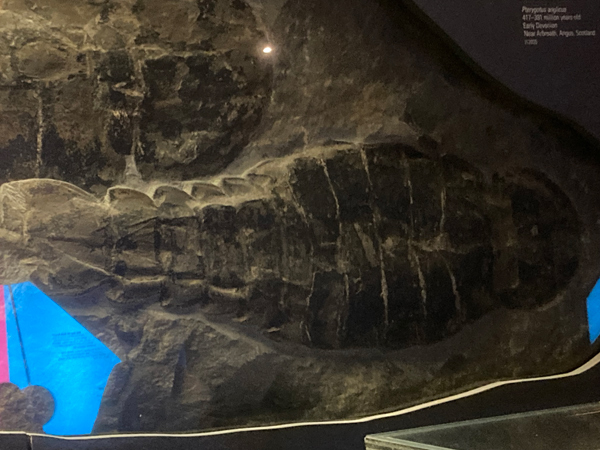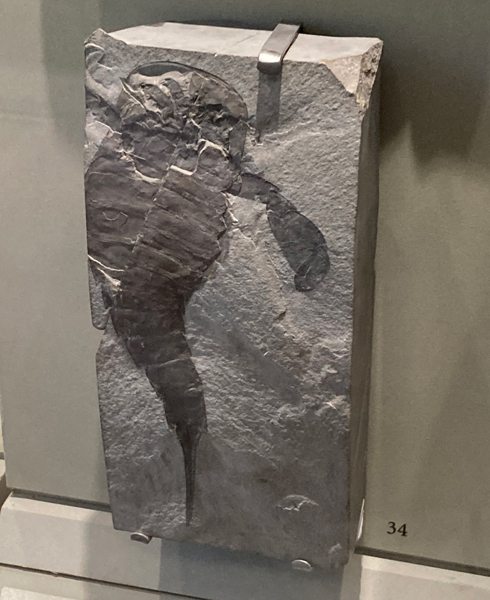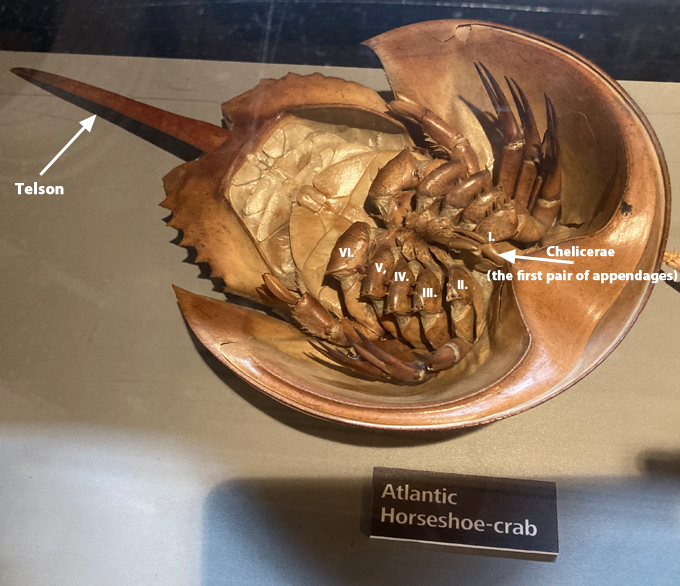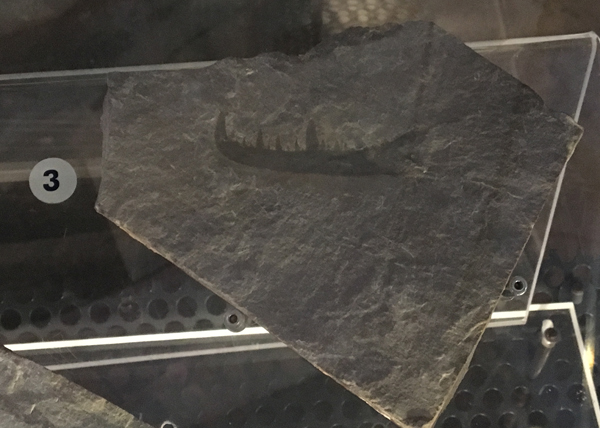Eurypterids (Eurypterida) are often referred to as sea scorpions. Like scorpions these extinct invertebrates are members of the Arthropoda Phylum. They are distantly related to extant scorpions and spiders. It is thought that the first eurypterids evolved during the Ordovician. They thrived in the Silurian and Devonian. Giant forms evolved, animals like Jaekeklopterus, Acutiramus and Pterygotus. However, the number of taxa was severely depleted during the end-Devonian extinction event and although they survived for at least another 100 million years or so, during the Carboniferous and Permian they only made up a very small percentage of the taxa described from fossil deposits.

Picture credit: Everything Dinosaur
The picture (above) shows two Pterygotus anglicus fossil specimens on display at the London Natural History Museum. These Early Devonian fossils come from Arbroath (Scotland).
The Shape of the Telson
Note the broad, flattened, blade-like final segment of the animal. This is the telson and in the Pterygotioidea lineage (as well as in some other Superfamilies), the telson evolved into an organ to help with propulsion and steering. In other eurypterids, the telson is shaped very differently. For example, in the sea scorpion fossil (below), the telson is long and pointed.

The Giant Claws (Chelicerae) Seen in Some Sea Scorpion Fossils
The segmented body of eurypterids consisted of the frontal prosoma (head) and the posterior opisthosoma (abdomen). The prosoma contained the mouth and six pairs of appendages which are usually referred to as appendage pairs I to VI using Roman numerals. The segments that make up the opisthosoma are usually numbered using Arabic numerals 1, 2, 3 etc. The opisthosoma comprised twelve segments in total plus the telson.
The first pair of appendages, the only pair located in front of the mouth opening, is called the chelicerae (pronounced kel-iss-ser-ray). This pair of appendages evolved into a myriad of forms in the Chelicerata (pronounced kel-iss-ser-rat-ah), the Subphylum containing the eurypterids, spiders, mites, scorpions and horseshoe crabs. This pair of appendages form the fangs seen in spiders and form the feeding limbs of horseshoe crabs.

Picture credit: Everything Dinosaur
Powerful Pincers Adapted for Grasping Prey
Some of these appendages, such as the chelicerae of giant pterygotids evolved into powerful pincers armed with strong claws analogous to those seen in crabs and lobsters. These chelicerae seem to be adapted for grasping and subduing prey. This suggests that many eurypterids were predatory.

Note
A single appendage is referred to as a chelicera (pronounced kel-iss-ser-rah). Whereas a pair or more are referred to as chelicerae (kel-iss-ser-ray).
A spokesperson from Everything Dinosaur commented that these arthropods were remarkable animals.
“Some 250 different taxa have been described and some of these sea scorpions show adaptations that indicate they may have been partially terrestrial. Venturing out onto land is supported by trace fossils potentially preserving tracks of eurypterids walking across mud close to bodies of water.”
Visit the Everything Dinosaur website: Everything Dinosaur’s Website.






Leave A Comment